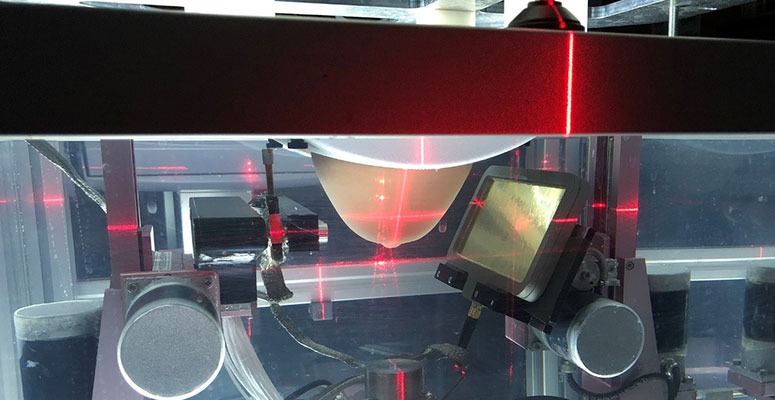There is growing interest in imaging techniques which are genuinely quantitative, generating images related to relevant intrinsic tissue properties.
NPL is carrying out research that will help to turn an image into a measurement, assisting in helping to diagnose disease more accurately. Our research in the area of diagnostic ultrasound is the development and support of Quantitative Imaging (QI) techniques. These methods provide images and data relating to intrinsic characteristics of tissue which can be linked to tissue pathology, and are potentially independent of instrumentation and operator. Understanding measurement uncertainties involved in these QI techniques is critical to their successful application.
We are developing a prototype instrument for Ultrasound Computed Tomography (UCT) of breast tissue for cancer detection. UCT works by transmitting ultrasonic sound waves through the breast, which are then detected by sensors. A tomographic reconstruction algorithm converts the signals from these sensors into maps of acoustic properties of the breast tissue, such as sound-speed, acoustic attenuation and stiffness. This quantitative data can be used to detect cancerous tissue without relying on a 'trained eye'. Apart from the quantitative nature of the data generated, UCT has other advantages over the most commonly employed technique currently, X-ray mammography. For instance, 3D datasets can be generated and repeat scans can be carried out without the risks of exposure to ionising radiation, the procedure is comfortable for the patient, who lies prone on a couch throughout, without the need for the breast compression.
We have developed a new type of phase-insensitive sensor for application to UCT which utilises the pyroelectric effect to measure ultrasonic power accurately, even after the strong aberration of the ultrasound beam that occurs during propagation through breast tissue. This aberration can cause inaccuracies when using traditional phase-sensitive ultrasonic detectors, particularly when attempting to reconstruct the attenuation coefficient of the tissue. An NIHR funded proof-of-concept project demonstrated that the sensor could be employed to generate near artefact-free maps of the attenuation coefficient of simple test objects, and a prototype clinical system has been developed as part of an Innovate UK funded collaboration with University Hospitals Bristol (UHB), North Bristol NHS Trust (NBT), Precision Acoustics Ltd and Designworks.
We are also developing a metrological infrastructure supporting other QI modalities such as those based on the imaging of the elastic properties of tissue (elastography) using ultrasound, and the high imaging spatial resolution provided by photoacoustics.

Our research and measurement solutions support innovation and product development. We work with companies to deliver business advantage and commercial success.
Contact our Customer Services team on +44 20 8943 7070